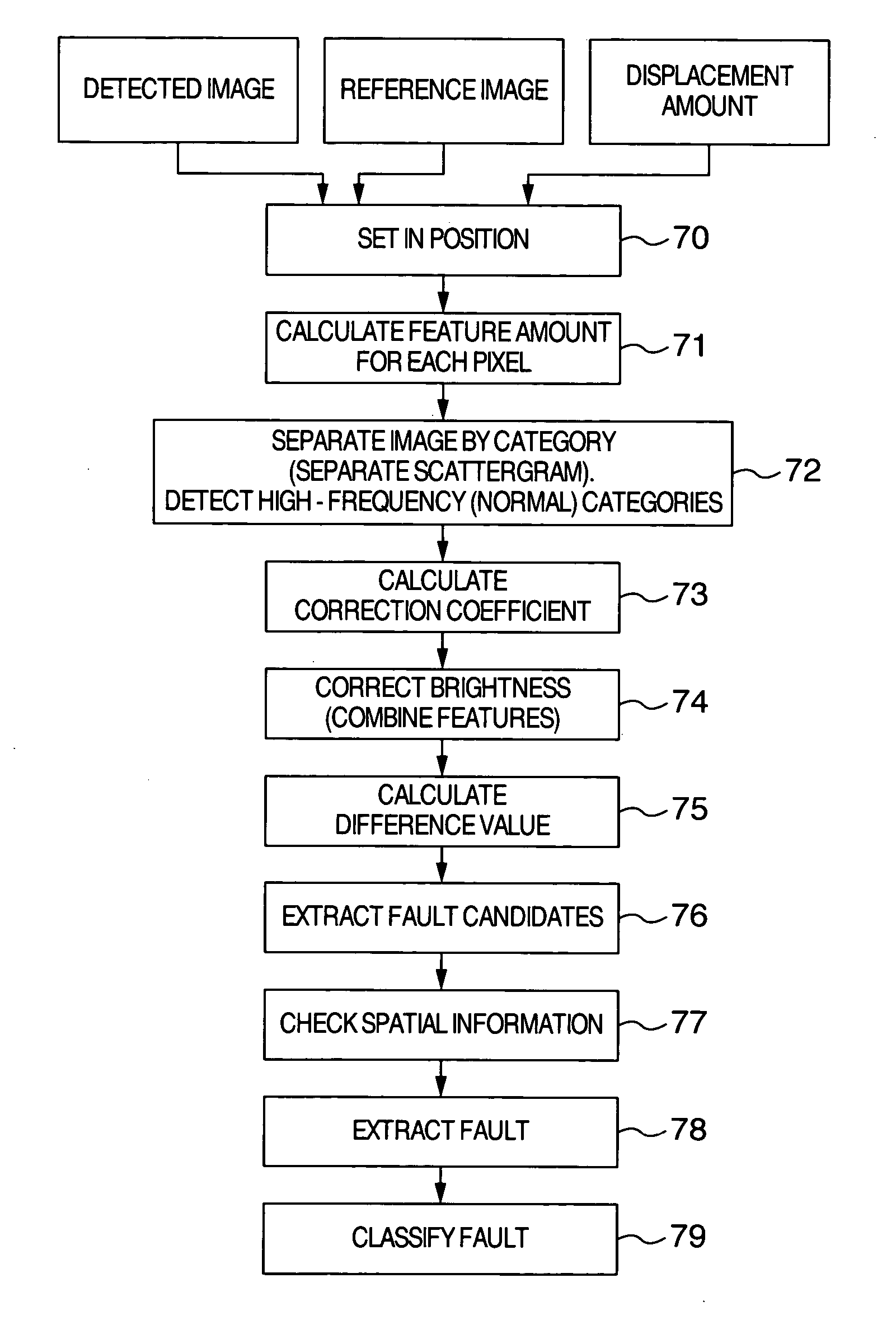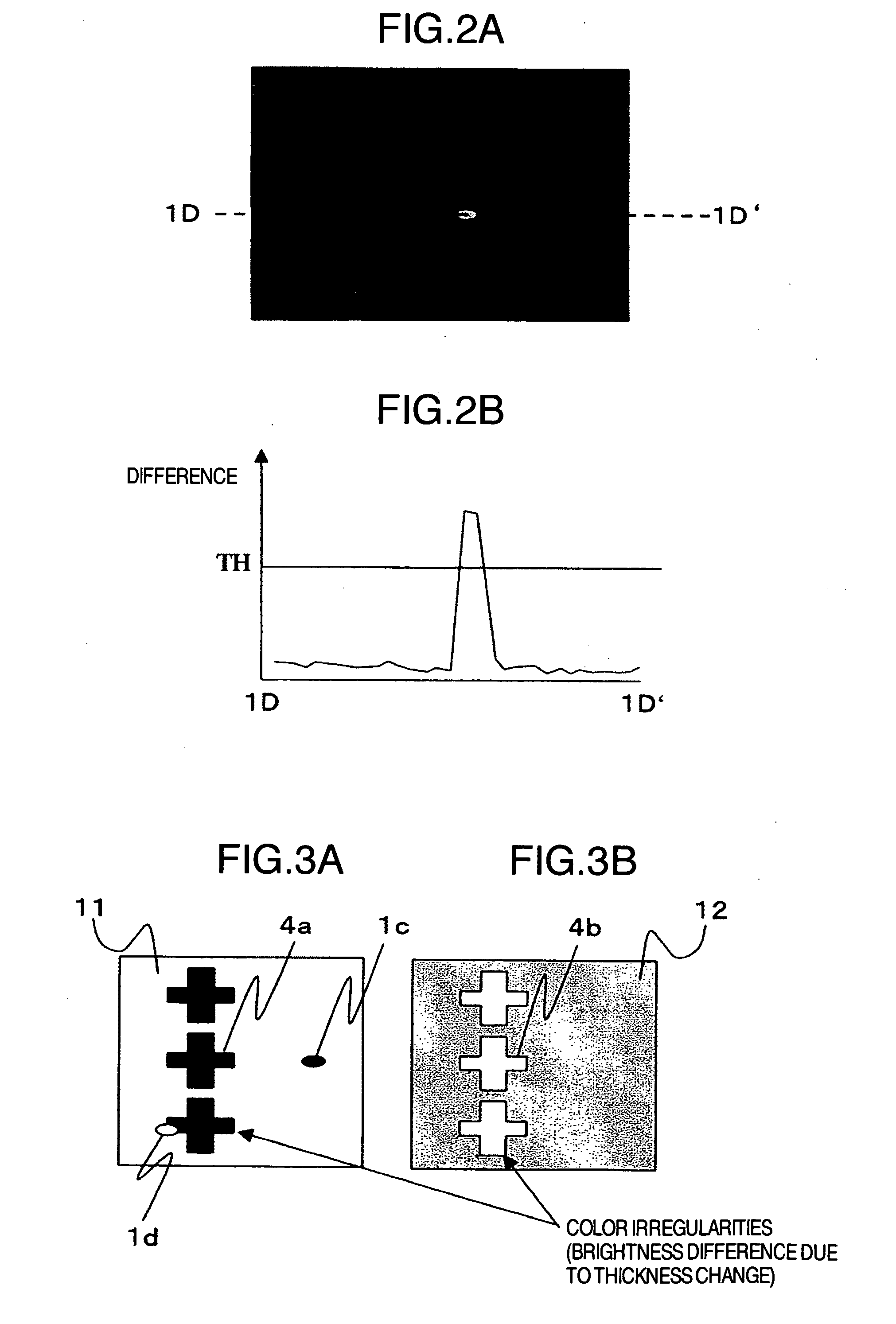Fault inspection method
a technology of fault inspection and inspection method, which is applied in the field of fault inspection apparatus, can solve the problems of extreme deterioration of inspection sensitivity as a whole, difficulty in adjusting the inspection conditions, so as to achieve simplified inspection conditions, optimize threshold values, and high sensitivity
- Summary
- Abstract
- Description
- Claims
- Application Information
AI Technical Summary
Benefits of technology
Problems solved by technology
Method used
Image
Examples
Embodiment Construction
[0074] An embodiment of the invention is explained in detail below with reference to the drawings.
[0075] A fault inspection method for an optical appearance inspection apparatus for a semiconductor wafer is explained as an embodiment. FIG. 5 shows an example of the configuration of the apparatus. Reference numeral 51 designates a specimen (an object to be inspected such as a semiconductor wafer), numeral 52 a stage movable with the specimen 51 mounted thereon, numeral 53 a detection unit configured of a light source 501 for emitting the illumination light radiated on the specimen 51, an illumination optical system 502 for condensing the light emitted from the light source 501 and an image sensor 504 for irradiating the specimen 51, through an objective lens 503, with the illumination light condensed by the illumination optical system 502, focusing the reflected light and the diffracted light again through the objective lens 503 and converting the focused optical image into an image...
PUM
 Login to View More
Login to View More Abstract
Description
Claims
Application Information
 Login to View More
Login to View More - R&D
- Intellectual Property
- Life Sciences
- Materials
- Tech Scout
- Unparalleled Data Quality
- Higher Quality Content
- 60% Fewer Hallucinations
Browse by: Latest US Patents, China's latest patents, Technical Efficacy Thesaurus, Application Domain, Technology Topic, Popular Technical Reports.
© 2025 PatSnap. All rights reserved.Legal|Privacy policy|Modern Slavery Act Transparency Statement|Sitemap|About US| Contact US: help@patsnap.com



